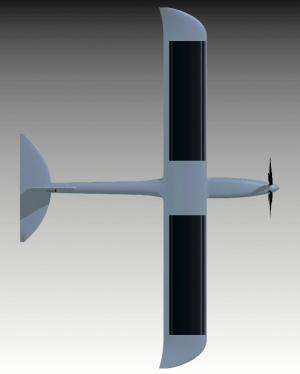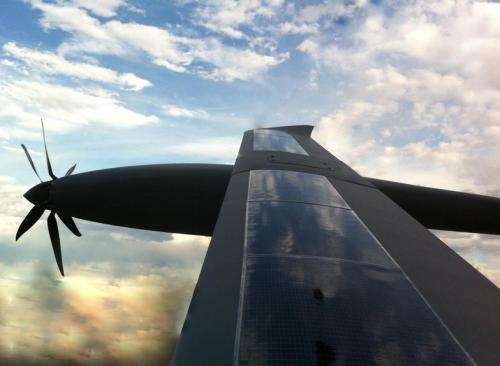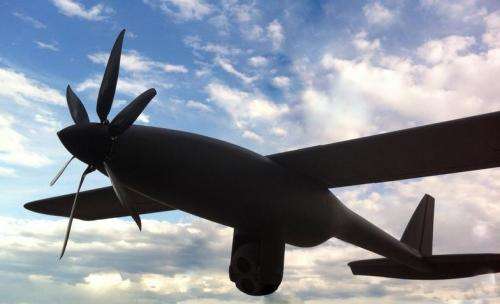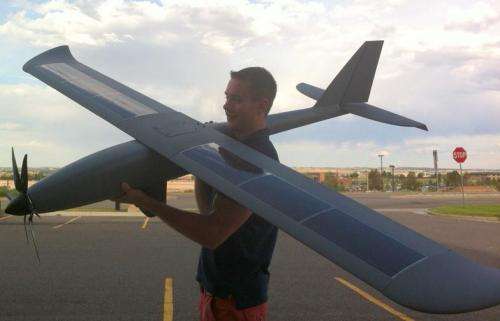August 13, 2012 report
Flying silent, seeing more, unmanned Silent Falcon makes debut

(Phys.org) -- Silent Falcon UAS Technologies of Albuquerque, New Mexico earlier this week took the wraps off the solar-powered Silent Falcon. The Silent Falcon is designed to be a man-portable small Unmanned Aircraft System (sUAS) for long-duration surveillance and reconnaissance. It is light enough to be carried and hand launched, while rocket launching is an option. It has a top speed of 112 km/h. and an operational flying altitude from 100 feet (30.5 m) to 20,000 feet (6096 m) and a range of 25 km (15.5 mi).
The company’s motto for this solar electric model, “Flies Silent, Flies Longer and Sees More,” is an accurate explanation of why the Silent Falcon is an attractive newcomer. The Silent Falcon’s power comes from thin film photovoltaic panels built into the wings with lithium polymer batteries for storage. Falcon has an endurance of up to 14 hours in the sky, whereas it can fly up to six hours running on battery power at night. The Silent Falcon system, built of lightweight carbon composites, is also billed as very quiet with low thermal signature to reduce detection.

The system was built in collaboration with Bye Aerospace, which provided research and engineering support.
Shown at the Association for Unmanned Vehicle Systems International (AUVSI) conference in Las Vegas, one of the promotional talking points was its ability to provide superior imagery and data at higher altitudes of lengthy flight endurance missions. The Silent Falcon carries an electro-optical imaging system called FalconVision with night vision capability, a laser pointer, an onboard HD video processor, all inertially stabilized. The system can identify and track targets and perform geo-location and geo-tracking operations.

Another feature is that the Silent Falcon is modular. Three interchangeable wing configurations are provided so that the Silent Falcon can adapt to mission endurance requirements. The company’s products target several markets -- defense, domestic public safety, and private security contractors. Commercial production on the Silent Falcon starts next year.
At the conference in Vegas, Vice Adm. William R. Burke, deputy chief of Naval Operations Warfare Systems for the U.S. Navy, told his audience how the Navy was changing the way it thinks about unmanned systems capabilities. Now, he says, the Navy works to evolve with the speed of technology, instead of with a traditional seven- to 15-year platform timeline.

Lt. Gen. Mary Legere of the U.S. Army said UAS would continue to be essential enablers for the Army but their capabilities and operability must evolve. Legere said she would like to see multi-intelligence payloads for UAS and plug and play, “iPad easy” controls for soldiers who use the systems.
More information:
www.auvsi.org/news/
www.silentfalconuas.com/News.html
© 2012 Phys.org




















